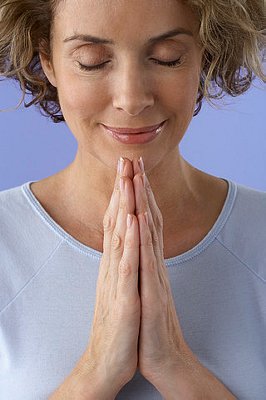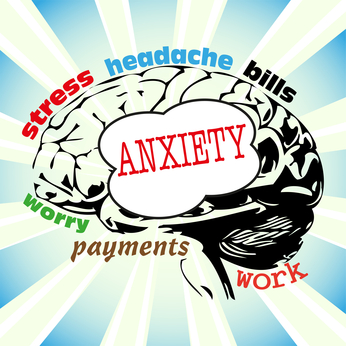Anxiety. Panic. Constant worry. Whatever you call it, the experience is exhausting. It may build slowly and steadily—or it may come out of the blue. You may know exactly what’s causing it:
Or, anxiety may arise for no identifiable reason. You’re ready to crawl out of your skin—even though life may be going pretty well. Your anxious feelings are totally out of proportion to the circumstances.
Anxiety can overwhelm you,
making it impossible to function normally.
When the mind is anxious, the body comes along for the ride. You may be experiencing:
- Sleeplessness
- Your heart beating out of control
- Racing thoughts
- The sensation of not being able to catch your breath
The ancient yogis knew about the deep connection between the state of our minds and bodies. They also knew that tending to the interaction between mind and body is one of the best ways to help you move into a more balanced and peaceful state of being.
Practices derived from the ancient traditions of yoga can help you find relief from anxiety. And you don’t have to be super-flexible, wear special yoga-clothes, or even get on a yoga mat to benefit from them. In fact, the simplest, most accessible yoga practices for anxiety begin not with pretzel-like poses, but with something available to every human being on the planet—the breath.
Here is a simple 10-step breathing practice to try when anxiety hits:
 Yogic 3-Part Breath:
Yogic 3-Part Breath:
- Sit in a comfortable chair, feet grounded on the floor.
- Place your right hand low on your abdomen. Inhale through your nose.
- Notice how your breath moves your belly out against your right hand.
- Exhale through your nose.
- Now, try to make your lower belly push your hand out a little bit farther—i.e., breathe a little deeper into your lower belly.
- Continue breathing through your nose for a few moments, noticing what it’s like to take deep, full, belly-breaths.
- Put your left hand on your upper chest & inhale slowly & deeply.
- Feel your breath filling up the bottom of your lungs first, gently pushing out your right hand.
- As you continue to inhale, notice how the breath expands the middle of your lungs at your ribcage, and finally, gently moves your left hand outward at your upper chest.
- Continue to breathe slowly and deeply for several more breaths, perhaps inhaling to a count of 4, and exhaling to a count of 4.
When practicing Yogic 3-Part Breath, it’s important to become aware of breathing into those “3 Parts”–first your low belly, then the middle lungs, and upper chest last. If it’s hard to breathe deeply in a seated position, you might try this exercise lying down instead.
The practice of yoga, or yoga-based breathing exercises can be very beneficial for people who struggle with anxiety or depression. These practices decrease cortisol levels, while increasing our “feel-good” hormones and neurotransmitters (serotonin, GABA2, oxytocin, and prolactin). Yoga and yogic breathing practices can help calm the sympathetic nervous system—i.e., the part of us that goes into “fight or flight” mode when we’re anxious. At the same time, the parasympathetic nervous system is activated, helping us feel calm and relaxed.
Yogic 3-Part Breath is an accessible and natural way to help you manage your anxiety, calm your nervous system, and move into a more relaxed state of being. This simple exercise helps you breathe more intentionally, slow down your breath, and breathe deeper into your belly, promoting a relaxation response in the body and mind.
If you’d like other natural practices for coping with anxiety or depression, contact me for an appointment today at (253) 761-8808 x2, or joanna@soulcarepsychotherapy.com. Together we can work toward relieving your symptoms, sorting through their root-causes, and finding freedom to live the life that fits with the person you truly are inside.
© 2013 Joanna Robinson, M.Div., M.Ed. All Rights Reserved. No part of this article may be distributed without permission.
Notes:
1 Please note that this article is not meant to provide medical advice or to replace anxiety treatments prescribed by a doctor. Readers are responsible for checking with their physician to make sure any health conditions they have do not preclude the practices outlined in this article.
2 *GABA = gamma-aminobutyric acid, an amino acid that functions as a neurotransmitter.

